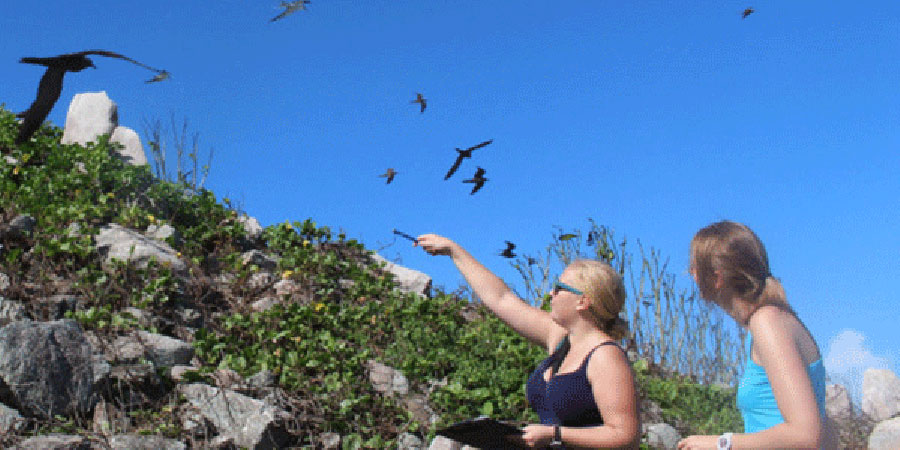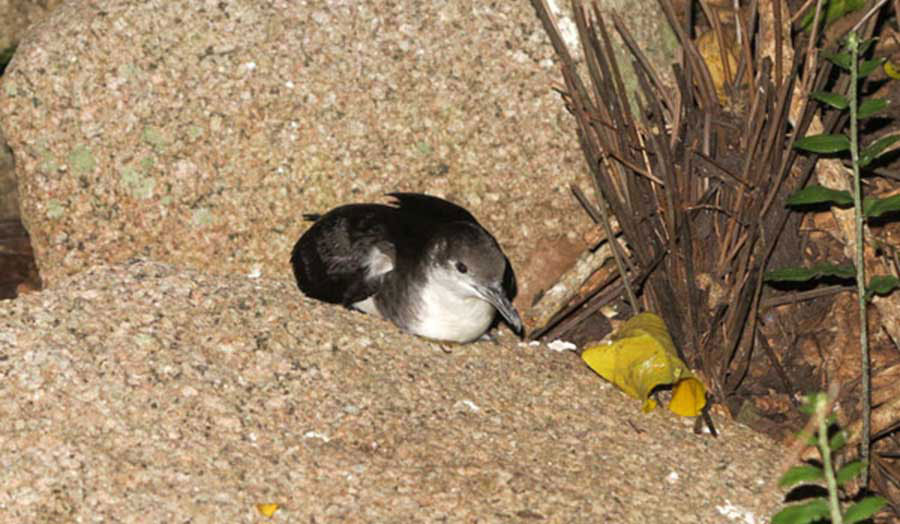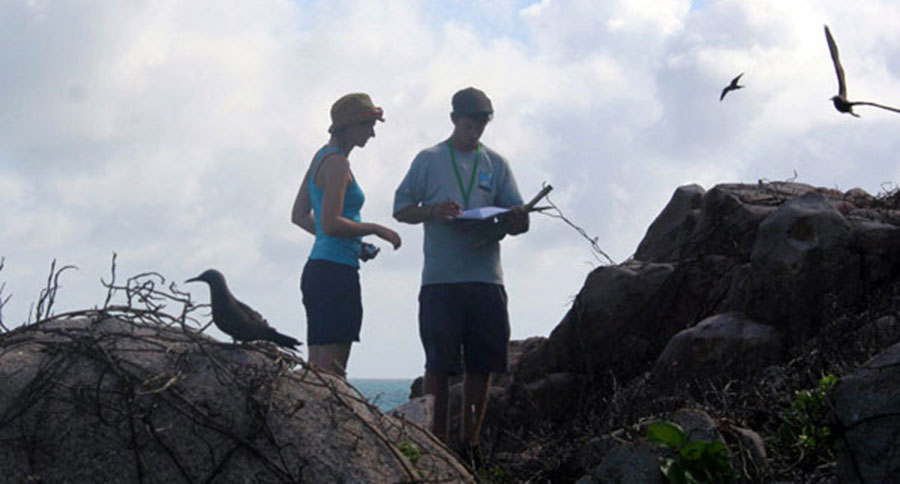
‘The most important parameters for monitoring seabirds are the size and long-term trends of the breeding population and these can only be determined by repeated censuses over many years’ (Burger and Lawrence, 2003).Seabird censuses have been carried out at regular intervals on Cousin during the last 10 years, allowing such trends to be monitored.
It’s that time of year again when Cousin is bursting at the seams with nesting seabirds. Most prolific of these is the Lesser Noddy (Anous tenuirostris), you don’t need to do a census to know there are thousands and thousands of them nesting. Other birds currently nesting on Cousin are the Brown Noddy (Anous stolidus), Tropical Shearwater (Puffinus herminieri), White Tern (Gygis alba), White-tailed Tropicbird (Phaethon lepturus), Bridled-Tern (Onychoprion anaethetus), Sooty Tern (Sterna fuscata) and the Wedge-tail Shearwater (Puffinus pacificus).

hese birds each fill specific niche areas of the island; Lesser Noddy’s and White Terns nest in the tree branches, White-tail Tropicbirds nest on the ground among roots, Brown Noddy’s nest on open rock areas and in coconut tree’s whereas the shearwaters nest in burrows mostly on the hill, Sooty Terns and Bridled-Terns nest in open scrub areas where the chicks can hide once they hatch. So when censusing all these birds its important to incorporate all these different habitats.
The above-mentioned species can be considered the most prolific of seabird species in the Western Indian Ocean and particularly in the Inner-granitic Seychelles. They can act as both valuable indicators of oceanic conditions as well as indicators of human induced impacts, such as nesting habitat disturbance, pollution or over-fishing. Cousin Island Special Reserve is a safe haven for them to nest without disturbances. Continuous protection and habitat restoration will ensure that these species can nest but will not protect them from factors affecting their food availability and therefore breeding success.
The Cousin seabird census is carried out over a one-week period, at the same time each year. The Cousin Reserve wardens, along with conservation volunteers, led by myself, visit 70 plots and using a radius to estimate a known circle area and counting all the breeding pairs within an area. For the shearwaters, burrows are located during the day then revisited that night to play a recording of calls into the burrow, whether the shearwaters respond or emerge is recorded.

This year we estimate there are around 54,000 breeding pairs of Lesser Noddy’s, around 3000 white-tern breeding pairs throughout the year, just over 2000 breeding pairs of White-tailed Tropicbird throughout the year, around 1500 Tropical Shearwater breeding pairs throughout the year and around 1500 breeding pairs of Brown Noddy’s. The Wedge-tail shearwaters were simply counted whilst doing the census providing a population number of around 4500 currently on Cousin but this is the early stages and another more accurate count of breeding pairs will be made later in the year. Sooty Terns and Bridled-Terns censuses are ongoing and recorded separately due to the very small areas where the breeding colonies are located.
April Burt

